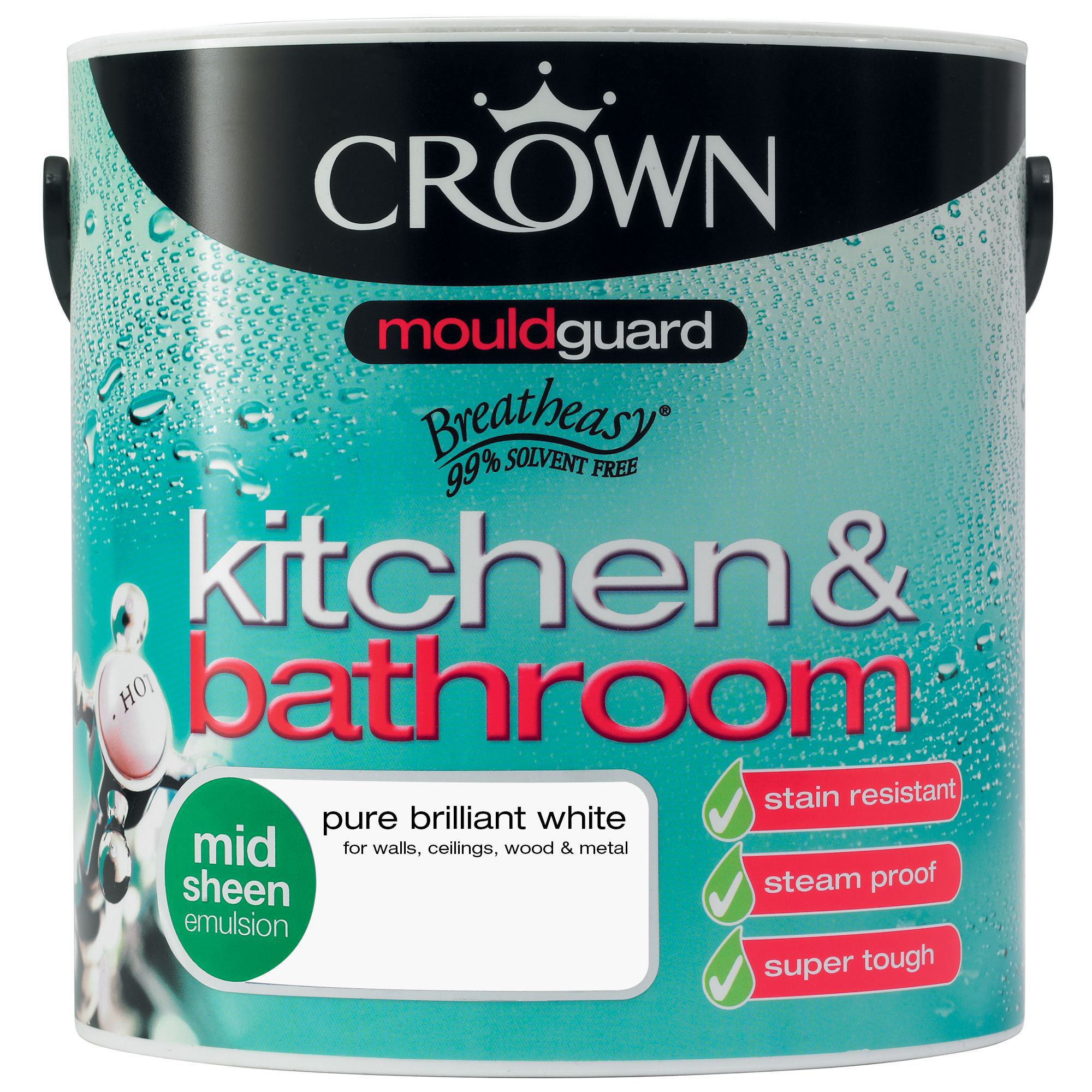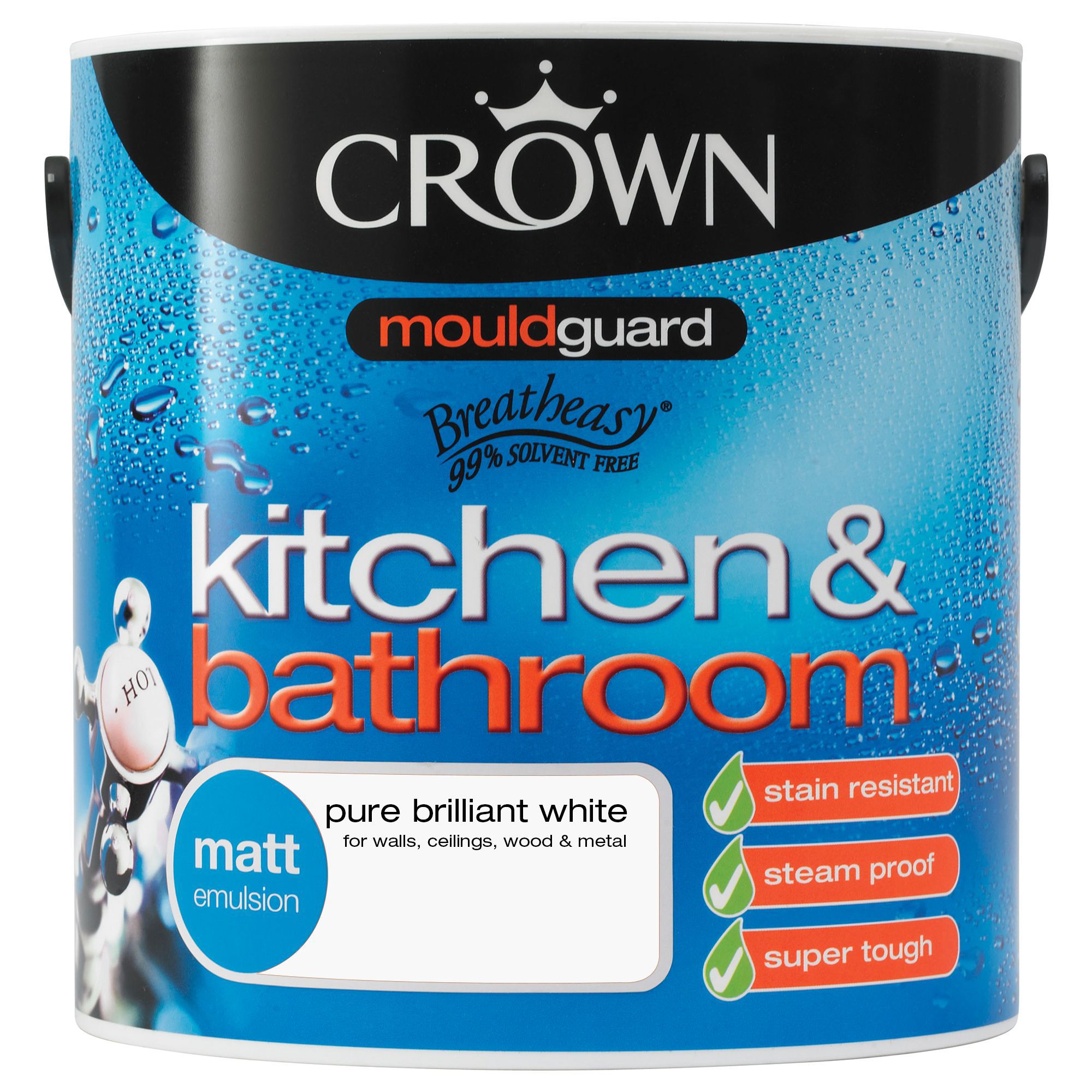Crown Kitchen and Bathroom Paint
Your kitchen and bathroom are high-traffic areas that experience a lot of wear and tear. These rooms are often exposed to moisture, spills, and grease, which can quickly damage ordinary paint. Choosing the right paint for these spaces is crucial to ensure durability, longevity, and a beautiful finish. Crown Paints, a renowned brand known for its high-quality paints, offers a range of specialized products designed specifically for kitchens and bathrooms.
Crown Kitchen and Bathroom Paint Features
Crown Kitchen and Bathroom paints are formulated to withstand the challenges of these demanding environments. Here are some key features that make them stand out:
- Moisture Resistance: Crown Kitchen and Bathroom paints are highly resistant to moisture, preventing mold and mildew growth. They form a protective barrier that prevents water from penetrating the paint film, ensuring a long-lasting finish.
- Durability: These paints are designed to withstand the constant scrubbing and cleaning that kitchens and bathrooms require. Their tough, durable finish resists scratches, scuffs, and stains, keeping your walls looking fresh and clean for years to come.
- Easy Cleaning: Crown Kitchen and Bathroom paints have a smooth, washable surface that makes cleaning a breeze. Spills and stains can be easily wiped away with a damp cloth, restoring the paint to its original condition.
- Wide Range of Colors: Crown offers a wide selection of colors for kitchens and bathrooms, allowing you to create the perfect look for your space. Whether you prefer classic white or bold, vibrant hues, you’ll find the perfect shade to match your style.
Choosing the Right Crown Paint for Your Kitchen and Bathroom
Crown offers a range of kitchen and bathroom paints designed to withstand the challenges of these high-traffic areas. Selecting the right paint finish depends on your desired aesthetic, durability needs, and ease of cleaning preferences.
Crown Kitchen and Bathroom Paint Finishes
Crown kitchen and bathroom paints are available in a variety of finishes, each offering unique properties. Understanding these differences will help you choose the best option for your specific needs.
- Gloss: Known for its high sheen, gloss paint reflects the most light, creating a polished and durable finish. It is highly washable and resistant to moisture and stains, making it ideal for high-traffic areas like kitchens and bathrooms. However, imperfections in the surface will be more noticeable with a gloss finish.
- Satin: Offering a slightly less shiny finish than gloss, satin paint provides a balance of durability and a softer look. It’s also highly washable and resistant to moisture, making it a popular choice for kitchens and bathrooms. The satin finish is less likely to show imperfections than gloss, but it still reflects light effectively.
- Eggshell: With a subtle sheen, eggshell paint provides a soft, elegant finish that’s still durable and washable. It’s a good option for kitchens and bathrooms where a more understated look is preferred. Eggshell paint is less reflective than gloss and satin, making it ideal for hiding minor imperfections.
- Matt: Offering the least sheen, matt paint creates a flat, velvety finish that’s ideal for hiding imperfections. It’s also very good at absorbing light, creating a calming and understated atmosphere. However, matt paint is less durable and washable than other finishes, making it less suitable for high-traffic areas like kitchens and bathrooms.
Crown Kitchen and Bathroom Paint Comparison
| Finish | Sheen Level | Durability | Washability | Light Reflection | Ideal Applications |
|---|---|---|---|---|---|
| Gloss | High | High | Very High | High | Kitchens, bathrooms, high-traffic areas, trim, doors |
| Satin | Medium | High | High | Medium | Kitchens, bathrooms, hallways, bedrooms |
| Eggshell | Low | Medium | Medium | Low | Living rooms, bedrooms, hallways, walls with minor imperfections |
| Matt | Very Low | Low | Low | Very Low | Bedrooms, living rooms, walls with significant imperfections |
Tips for Preparing and Painting Your Kitchen and Bathroom
Preparing your kitchen and bathroom surfaces for painting is crucial for achieving a long-lasting and professional-looking finish. Proper preparation ensures that the paint adheres well, preventing peeling, chipping, and cracking.
Preparing Surfaces for Painting, Crown kitchen and bathroom paint
Thorough surface preparation is essential for achieving a smooth and durable paint finish. It involves cleaning, sanding, and priming the surfaces to ensure proper paint adhesion.
- Clean the Surfaces: Begin by thoroughly cleaning the surfaces to remove dirt, grease, and grime. Use a mild detergent and warm water for most surfaces. For heavily soiled areas, consider using a degreaser. Rinse the surfaces thoroughly with clean water and allow them to dry completely.
- Sanding: Sanding helps to create a smooth surface and remove any imperfections. Use fine-grit sandpaper (120-180 grit) for smooth surfaces and medium-grit sandpaper (80-100 grit) for rough surfaces. Sand in the direction of the wood grain for wooden surfaces. For walls and ceilings, use a sanding block or a pole sander.
- Prime the Surfaces: Priming is an important step that helps to seal the surface, improve paint adhesion, and create a uniform base for the paint. Choose a primer specifically designed for kitchen and bathroom surfaces, as they often contain mildewcide and moisture-resistant properties. Apply the primer evenly using a brush, roller, or spray gun. Allow the primer to dry completely before applying the paint.
Painting Techniques for Kitchen and Bathroom
Applying paint in a systematic and efficient manner is key to achieving a professional-looking finish.
- Use High-Quality Paint: Opt for a paint specifically formulated for kitchen and bathroom use. These paints are designed to resist moisture, mildew, and stains. Look for paints with a high-gloss or semi-gloss finish, as they are easier to clean and maintain.
- Proper Ventilation: Ensure adequate ventilation while painting. Open windows and doors to allow fresh air to circulate and remove paint fumes. Wear a respirator mask to protect yourself from inhaling paint fumes.
- Use the Right Tools: Choose the appropriate tools for the job. Use a high-quality brush for detailed work, a roller for large areas, and a spray gun for even coverage. Use painter’s tape to mask off areas you don’t want to paint.
- Apply Thin Coats: Apply thin coats of paint to avoid drips and runs. Allow each coat to dry completely before applying the next coat. Multiple thin coats will provide better coverage and a smoother finish than one thick coat.
- Clean Up: Clean your tools and brushes thoroughly with paint thinner or soap and water. Dispose of paint waste properly according to local regulations.


